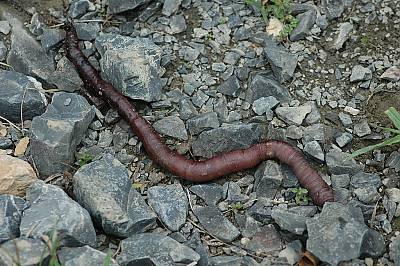- Brazil


Minhocuçu Extractivism in Brazil

© “Parque Est Intervales - minhocuçu” by Claudio JJ is licensed under CC BY-SA 4.0
1. ICH domains
Oral traditions and expressions, social practices, knowledge and practices concerning nature and the universe
2. Short description
The minhocuçu (Rhinodrilus alatus Righi, 1971) is an endemic earthworm of the Cerrado of Minas Gerais, Brazil, that can reach lengths of up to 60cm. It is used as fishing bait and has represented an economic resource for the last 70 years for many families in the region, whose main source of income is the commercialization of these animals.
However, the earthworm is now included on the official list of threatened fauna of Brazil due to climate change and competition between local communities. Traditional knowledge of the minhocuçu among the Afro-descendant Pontinha community has been particularly useful in elaborating a Management of Rhinodrilus alatus Plan. The plan is the result of a collective agreement arrived at through participatory processes conducted between 2004 and 2011, in an attempt to link traditional knowledge with technical data on the abundance and distribution of the species. Such conservation efforts have made possible the implementation of public policies for sustainable use and minimized socio-environmental challenges related to minhocuçu extractivism and commercialisation.
Such use of traditional knowledge to manage natural resourcesfor a variety of purposes (e.g. food, medicine and fuel) is common among many traditional communities. Over time, the accumulation of knowledge about such resources is passed on from one generation to the next, such as information about its biology and the conservation of plant and animal species. However, competition for access to natural resources, over-exploitation for commercial purposes and the interference of other actors in resource management can affect the way such knowledge is applied, respected and transmitted. The use of traditional knowledge to reach a collective agreement for the sustainable use of natural resources can play a fundamental role in the continuing respect and future transmission of such traditional knowledge.
Further information:
Additional information on minhocuçu, its conservation and use (in Portuguese):
http://sustentar.org.br/site/projeto/conservacao-e-uso-sustentavel-do-minhocucu-em-minas-gerais
https://www.alice.cnptia.embrapa.br/bitstream/doc/945555/1/2012GeorgeBBBRhinodrilusAlatus.pdf
A more technical paper concerning the conservation of the earthworm, including in depth study of its life history, abundance, distribution and resilience (in English)
http://www.scielo.br/scielo.php?script=sci_arttext&pid=S1519-69842013000400699&lng=en&nrm=iso&tlng=en
A video about the Minhocuçu Project and people who practice the traditional knowledge (in Portuguese):
https://vimeo.com/137275782
3. Link with sustainable development
The Native Species Management Plan in Brazil provides an example of a strategy that aims to minimise the negative impacts of extractivism, continue efforts of conservation, while also guaranteeing the continued source of income for the extractive community. In the specific case of the Pontinha community, the minhocuçu management plan involved the development of alternative employment and income generation, reproduction of minhocuçu in captivity, and the creation and implementation of protected areas for the conservation and management of other earthworm species used in fishing. The collaborative development of such plans echo SDG 12, which aims to ensure sustainable consumption and production patterns as well as SDG 15, on halting biodiversity loss.
4. Questions for reflection
There are several factors that may negatively affect the minhocuçu population in addition to the extraction activity itself, such as agroforestry activities and soil preparation practices, (e.g. fire and tilling), conflict between extractivists and landowners, and local and global climatic changes (e.g. increase of temperatures and the decrease of humidity). Collective agreements that aim at environmental preservation and take into account traditional knowledge and practices can be delicate and require the involvement of different actors. The articulation of conflicting interests is a major challenge and is not always achieved. Even when accomplished, the agreement is not always effective, as it depends on institutional capacity to sustain the plan and results achieved over the long run. What are some factors such as national policies or initiatives that can be taken to facilitate a smoother process of such collective agreements integrating traditional knowledge?